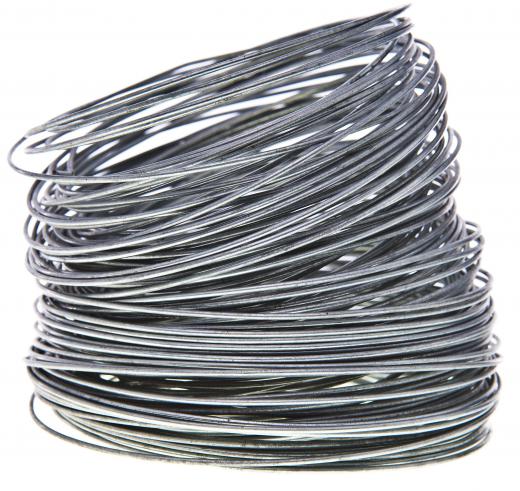Clad metal is metal that uses a thinly bonded layer or layers of dissimilar metals over top of less expensive or less durable base metals to create a stronger, more attractive or otherwise more durable and desirable surface. In many cases, clad metals are a better option than electroplated or galvanized metals, because the capability exists to clad more types of metals than can be electroplated or galvanized. Further, the cladding process used to create clad metal is more durable and lasting than a plating or galvanizing process. There are a number of different types of metal cladding practiced, and each type has its own strengths and weaknesses for different projects.
One type of metal cladding process is known as overlay cladding. To create this clad metal, one layer of metal is bonded to another by extreme heat and pressure. Overlay cladding can bond dissimilar metals, such as nickel and gold or gold and silver, to each other, as well as bonding up to seven different layers of metal to get the strength and durability benefits of all seven in the finished product. Overlay cladding is also useful because it does not require adhesives, fillers, or any welding, and it is a permanent solution that will bond the metal together without any worry of it later coming apart.

Inlay cladding is another type of highly complex and exceedingly useful metal cladding process that is used to create clad metal objects. With inlay cladding, dissimilar metals can be bonded together only where they are necessary to be joined. For example, a piece of copper can be clad into a piece of gold exactly where it needs to be for when a weld is produced that turns the finished product into a sculpture. Inlay cladding also allows the characteristics of the different metals to be used to their maximum benefit in the creation of the finished clad metal product.
Another use of cladding is contact cladding, where certain metals are cladded together using heat and pressure to form perfect conductive metals. An example of this might be a wire that needs to have the tensile strength of steel, but the electrical conductivity and corrosion resistance of copper. Using contact cladding, the two metals can be bonded together to get the benefits of both types of metal, without the chance that a weld or fastener will break or that the material will not be sufficient for the use that is required of it.
